#san domenico palace
Explore tagged Tumblr posts
Text


















From the top.....View from above..... Isola Bella. I haven't gone yet but soon. It's such a spectacular view it almost looks fake, incredible. The next three photos are the giardini and classrooms at Babilonia Language School where I am studying. Just started the second week of classes. We have a new instructor each week and new students, depending on how many leave. It should be "interesting", since I'll be here a while. I'll meet numerous people coming and going. I'm really not a people person so it's a lot of meet and greet, then they leave. I may move elsewhere for November, not sure yet. Beautiful public park, nuts in the colorful vehicle and frutta. The tastiest, freshest fruits and veggies here, locally grown. Sights around town and San Domenico Palace Hotel where some episodes of "White Lotus" were filmed. lol. And of course there's Mt. Etna.
4 notes
·
View notes
Text
I stayed at 'The White Lotus' hotel in Sicily where the hit series was filmed. Take a look inside my 366-square-foot suite, which cost $2,248 per night.
Insider's Mikhaila Friel spent one night in San Domenico Palace, the hotel where "The White Lotus" was filmed in Sicily.
2 notes
·
View notes
Text
0 notes
Text
Grand Europe Adventure 2024 - Sightseeing in Taormina, Italy
During our short stay at San Domenico Palace, we managed to briefly explore the beautiful tranquil town located close to the hotel.






0 notes
Text
The nine Muses were originally seen as the divine inspiration for poetry, song and dance, but gradually became the emblems for all the liberal arts. With Apollo (represented as the sun) they also symbolised the ‘harmony of the spheres’. Here Tintoretto’s sweeping strokes have created powerfully articulated nudes who fly and turn with extraordinary freedom.
This painting and another by Tintoretto, Esther before Ahasuerus, also in the Royal Collection are of a similar size and, by 1627, were hanging together in the same passage in the Palazzo Ducale, Mantua. Although there is no record of the commissions, we know that Guglielmo Gonzaga, the 3rd Duke of Mantua, purchased other paintings directly from Tintoretto and visited the artist in Venice. The subject of the Muses is clearly appropriate for a court with a strong tradition of music and for a Duke with a personal interest in liturgical music. The painting is generally dated to the period when Tintoretto was producing a large number of paintings for the Scuola Grande di San Rocco and for the Doge’s Palace, as well as other private commissions. The word IN in the inscription has been thought to be an abbreviation of ‘invenit’ (meaning ‘invented’ by the artist, as opposed to the more usually ‘fecit’, ‘made’). This may imply that Tintoretto designed but did not execute the painting, as in the similar inscription on the Raising of Lazarus (St Catherine’s Church, Lübeck).
There are several versions and adaptations of this composition: in Indianapolis Museum of Art, Clowes collection, possibly by Domenico Tintoretto, and a fragment in the Rijksmuseum, Amsterdam, including the lower left seated figure only. A variant showing Apollo, the Muses and Three Graces in Dresden was destroyed in the Second World War. The quality of the Royal Collection picture suggests that it is the prime version, as do its many pentiments.
The Muses were the nine daughters of Jupiter and Mnemosyne (Memory) and companions of Apollo (here represented as the sun rather than a bodily presence). Like Apollo, they were regarded as incorporating supreme outward beauty and intellectual grace. They were originally seen as the divine inspiration for poetry, song and dance, but gradually became the emblems of all the liberal arts. Hesiod and the literature of the later Roman Empire gave each muse a specific literary form and musical instrument, but the associations were always flexible. By the sixteenth century Apollo and the Muses had become associated with the idea of the harmony of the spheres, with Apollo as the Sun. It is not surprising, given this range of associations, that the individual Muses are hard to identify here. Calliope, representing epic poetry, is their chief and plays a stringed instrument; she may therefore be the Muse in the central position, playing the harpsichord or clavicembalo. Clio, the Muse of history, holds a book and may be the figure below Apollo in the painting. Urania, associated with astronomy, is here given a globe and tablet, but her compasses are held by the muse reclining at the lower edge of the painting. Among the sources that Tintoretto must have consulted is the manual of mythology by Vincenzo Cartari, Le imagini con la spositione de i dei de gli antichi, published in Venice in 1556 and enlarged and reprinted in subsequent years. This source does not distinguish the Muses but does include the detail of the garlands of flowers, laurel and palm leaves.
The range of musical instruments normally associated with the muses is here reduced to the harpsichord, bass viol, lute and lira da braccio, all attentively depicted by Tintoretto, who was himself an accomplished musician. The harpsichord can be compared to contemporary instruments made by Giovanni Baffo in Venice, but its long end, which is clear in the Indianopolis copy, is omitted. The near Muse on the right tunes and plays her lira da braccio at the same time: Tintoretto’s priority would seem to have been the dynamic of the turning figure rather than the accuracy in recording a performance.
The large, strongly modelled figures, boldly executed with sweeping strokes, strongly lit from the right, and freed from a landscape setting, weave a coherent design of dynamic diagonal lines across the picture plane and into the picture space. The execution and composition has been likened to the four large Allegories of 1577-8 painted for an ante-room in the Palazzo Ducale, the Atrio Quadrato, for which Tintoretto was paid in 1577-8.
Borghini records that even in his sixties, Tintoretto continued to collect and study models of famous statues, such as those by Giambologna (1529-1608), and never tired of copying them. The effect of such studies has been traced in paintings dating from the 1570s, including The Muses. The pose of the back view of the Muse on the right has been related to the so-called Groticella Venus of c.1570 (Boboli Grotto, Palazzo Pitti, Florence), but is closer to the smaller bronzes such as Venus Drying Herself of c.1565 or Astrology of c.1575 (both Kunsthistorisches Museum, Vienna). The pose is never exact, and the similarity lies in Tintoretto’s interest in Giambologna’s type of slender, elegant women in contraposto poses. It has been suggested that the Muse flying in from the left derives from a Giambologna model of Lichas from Hercules and Lichas (one version now in the Art Institute of Chicago). According to Carlo Ridolfi, Tintoretto made models out of wax or clay, dressed them in cloth, studied the folds of the cloth on the limbs, and placed them in wood and cardboard constructions resembling miniature houses with small lamps alongside to introduce the effects of light and shade. Models were hung from roof beams so that they could be studied when seen from below. Such procedures enabled Tintoretto to create these powerfully articulated, flying nudes with such extraordinary freedom.
Catalogue entry adapted from The Art of Italy in the Royal Collection: Renaissance and Baroque, London, 2007

The Muses by Jacopo Robusti, called Il Tintoretto
Italian, 1578
oil on canvas
Royal Collection Trust (acquired by King Charles I)
#history#classics#art#art history#music#music history#lutherie#italy#ancient rome#veneto#venice#jacopo robusti#guglielmo gonzago duke of mantua#domenico robusti#hesiod#vincenzo cartari#giovanni antonio baffo#giambologna#muses#apollo#jupiter#mnemosyne#calliope#clio#urania#harpsichord#viol#bass viol#lute#lira da braccio
186 notes
·
View notes
Link
0 notes
Text
FOUR SEASONS TAORMINA (San Domenico Palace) | PHENOMENAL 5-star hotel in...
youtube
0 notes
Text
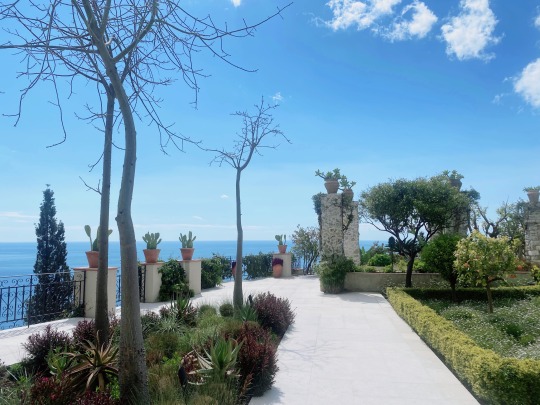
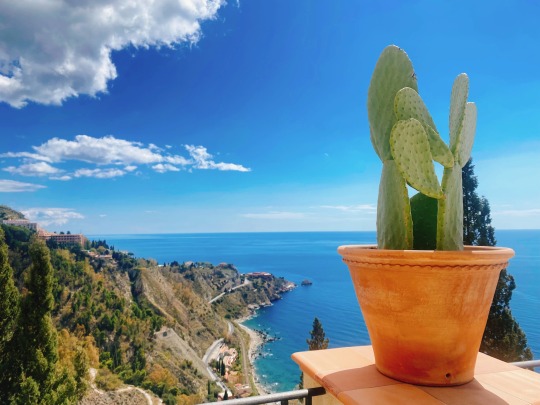
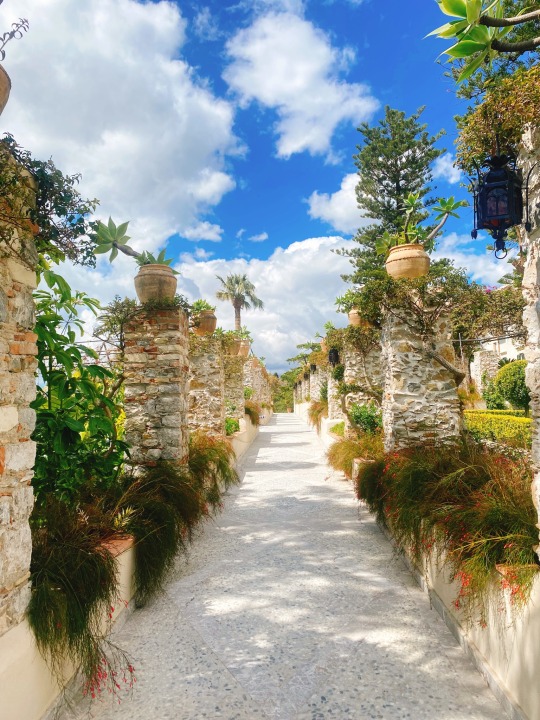
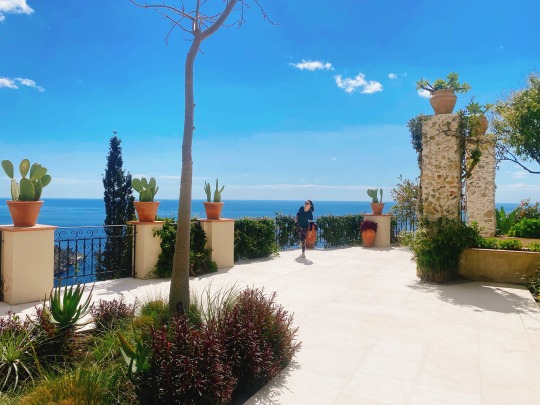
Palacio San Domenico, Taormina, Sicilia; Itália.
09 de abril de 2023
1 note
·
View note
Text
Maggiore Square is one of the most beautiful squares in Bologna. Piazza Maggiore, which is said to be the heart of Bologna, is surrounded by the most important administrative and religious buildings in the history of Bologna. Palazzo dei Notai in the square is one of the important structures of the region. Known as the notary public's building, this building was designed in 1381 by the city's notary guilds, Berto Cavalletto and Lorenzo da Bagnomarino. A part of the building facing Piazza Maggiore that leads to Palazzo D'Accursio was restored in 1437 by Bartolomeo Fioravanti. Palazzo dei Notai was restored in 1908 by Alfonso Rubbiani. The Basilica of San Petronio, which is also located in the square and is the 15th largest church in the world, was on the agenda of the world in 2002 with a completely different event apart from its architecture and history. Al-Qaeda planned to take action against this church, which is 132 meters long and 65 meters wide. Italian police arrested 5 people who were planning to blow up this historical building. The most impressive church in Bologna, the Basilica of San Petronio was built in 1388. Maggiore Square In place of the church built by Antonio di Vincenzo, in 1514, another architect proposed to build a larger church based on the St. Peter's Basilica in Rome, but the Pope did not approve such a large structure. There is a giant sundial on the east side of the basilica. Thanks to this watch designed by Gian Cassini and Domenico Gugliemi in 1656, anomalies in the Julian calendar were discovered, and this discovery led to the concept of "Year". (adsbygoogle = window.adsbygoogle || []).push(); Another important structure of the square is the Palazzo dei Banchi. Previously, merchants and bankers used to carry out their business around this building, known as the Palace of Banks. As a matter of fact, trade revolved in this region. Between 1565 and 1568, merchants who wanted to create a pleasant architecture in this area commissioned Vignola to build today's Palazzo dei Banchi. Palazzo dei Banchi arouses admiration with its portico. Address: Piazza Maggiore, 40124 Bologna BO Directions: Those who want to come by train can use the trains numbered S2 A, S2 B and S4 A. For buses, you should choose buses numbered 13, 14, 20, 25, 27, 29 and 39. Nearby Places: Portico di San Luca, Biblioteca Salaborsa, Basilica di San Petronio
0 notes
Photo

Morning booking a 10-days Family Trip to #Italy to include #AmalfiCoast and #Sicily. For their time in Sicily I have curated two sets of stays to enjoy the island in full. 5-nights in #Taormina - with a true White Lotus experience - at the new San Domenico Palace Four Seasons #Resort Taormina ( average nightly rate EUR 2780 ). Of course paired with unique and authentic experiences and tours, curated personally by Luxury Travel Curator in collaboration with our expert and trusted on-site partners. Booking #SanDomenicoPalace #FourSeasonsTaormina directly with me, my clients will enjoy a suite of #VIP Amenities such as and not limited to: Room upgrades + Early Check IN & Late Check OUT + Complimentary Breakfast + Food & Beverage and/or Spa Credits + Free WIFI among many others. Stay tuned to my upcoming trips 2023: Mexico City, Punta Mita & Jalisco, Mexico ( February 2023 ). Cuba ( February 2023 ). Milan & Rome, Italy ( March 2023 ). Buenos Aires, Argentina ( April 2023 ). Paris, France for Roland Garros ( May 2023 ). Subscribe to my IG Chanel, for full access to exclusive content, curated tips and recommendations, unique experiences, vip amenities and benefits, plus much more. My mission is to transform Tourists into Travelers by experiencing unique travel experiences, moments and destinations worldwide. Luxury Travel Curator, Concierge, Blogger & Lifestyle Consultant. Over 28 years curating the world of Authentic and Sophisticated Travel, Hospitality & Lifestyle, one destination at the time. Member of the exclusive @VirtuosoLTD Luxury Network, #AmericanExpress Membership Rewards, Fine Hotels & Resorts and Pay with Points Programs. Luxury #TravelAdvisor. #Jetsetter #Globetrotter #BonVivant. Founder of @LGTNetwork Luxury #GayTravel Curator, member of @IGLTA. #Travel #Hotel #Restaurant & #Airline reviews. Follow, read and share my travel experiences worldwide. #TravelAgent, #TravelBlogger, #WeddingPlanner #TravelBlog #LuxuryTravel #Luxury #Lifestyle #LuxuryTravelCurator #Concierge #Blogger #VirtuosoTravel @fstaormina @fourseasons Luxury Travel Curator & Co Mobile & WhatsApp +1 (917) 754-5515 / Email [email protected] / www.luxurytravelcurator.vip (at Taormina, Sicily) https://www.instagram.com/p/CocreZ_uL0W/?igshid=NGJjMDIxMWI=
#italy#amalficoast#sicily#taormina#resort#sandomenicopalace#fourseasonstaormina#vip#americanexpress#traveladvisor#jetsetter#globetrotter#bonvivant#gaytravel#travel#hotel#restaurant#airline#travelagent#travelblogger#weddingplanner#travelblog#luxurytravel#luxury#lifestyle#luxurytravelcurator#concierge#blogger#virtuosotravel
0 notes
Photo
Fontana Pretoria
La fontaine prétorienne (en italien : Fontana Pretoria) est une fontaine monumentale de Palerme située au cœur du centre historique de la ville qui représente le monument le plus important de la Piazza Pretoria. La fontaine est construite par Francesco Camilliani dans la ville de Florence en 1554, mais est déplacée à Palerme en 1574.
Histoire[modifier | modifier le code]
La fontaine avec le Palazzo Pretorio en arrière-plan
Origine florentine[modifier | modifier le code]
La fontaine est réalisée pour le jardin de don Luigi de Toledo à Florence1. Le terrain du jardin appartenait aux religieuses de San Domenico al Maglio mais est obtenu, après beaucoup de pression, en 1551. En 1584, le Palazzo di San Clemente est construit sur ce site. La création de ce jardin insolite (dépourvu de palais), et de la fontaine, est commandée au sculpteur florentin Francesco Camilliani, élève de Baccio Bandinelli.
Les travaux commencent en 1554. La fontaine comprenait 48 statues et était entourée d'une longue tonnelle formée de 90 colonnes de bois conçues par Bartolomeo Ammannati. Giorgio Vasari décrit la fontaine comme ceci : « fonte stupendissima che non ha pari à Fiorenza nè forse en Italie » (« fontaine merveilleuse, sans pareille à Florence et peut-être dans toute l'Italie »).
***
The Praetorian Fountain (Italian: Fontana Pretoria) is a monumental fountain in Palermo located in the heart of the historic center of the city that represents the most important monument of Piazza Pretoria. The fountain was built by Francesco Camilliani in the city of Florence in 1554, but moved to Palermo in 1574. History The fountain with the Palazzo Pretorio in the background Florentine origin The fountain was made for Don Luigi de Toledo's garden in Florence1. The land for the garden belonged to the nuns of San Domenico al Maglio but was obtained, after much pressure, in 1551. In 1584 the Palazzo di San Clemente was built on this site. The creation of this unusual garden (devoid of a palace), and of the fountain, was commissioned from the Florentine sculptor Francesco Camilliani, a pupil of Baccio Bandinelli. Work began in 1554. The fountain included 48 statues and was surrounded by a long arbor formed by 90 wooden columns designed by Bartolomeo Ammannati. Giorgio Vasari describes the fountain like this: “fonte stupendissima che non ha pari à Fiorenza nè forse en Italie” (“wonderful fountain, unparalleled in Florence and perhaps in all of Italy”)1.

Palermo, Italia -ARTE XIII Qualcunocomeme
2K notes
·
View notes
Text
Grand Europe Adventure 2024 - Family Time at San Domenico Palace, Taormina, A Four Seasons Hotel, Italy
After three weeks in Europe, we are finally at our last destination: San Domenico Palace, Taormina, A Four Seasons Hotel. This hotel is formerly a 14th century convent and is awarded “Best Hotel” in the Legends, Luminaries, and Leaders Best of the Best category at the 2023 Virtuoso Travel Awards.

The hotel truly lives up to its title as the best hotel with its breathtaking views, beautiful interior, and luxurious amenities and facilities.










San Domenico Palace, Taormina is the perfect final pitstop to celebrate my family's three week European adventure spanning 7 cities across 2 countries. We spent a lot of time by the pool and in the restaurants, dining and relaxing as we prepare to return back home in time to start school for our little girl.








Here's a quick glimpse at all of the delicious culinary creations at San Domenico Palace, Taormina:










A huge thank you to the team at San Domenico Palace, Taormina for making our short stay so memorable!
#SteveExplores#SteveExplores2024#Taormina#Italy#FourSeasons#FourSeasonsHotel#FourSeasonsHotelTaormina#FSTaormina#SanDomenicoPalace
0 notes
Photo


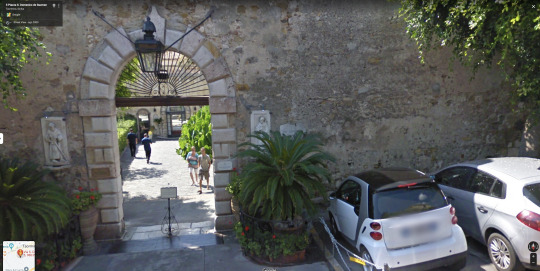
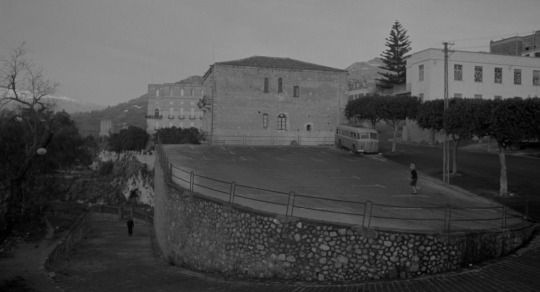

L’avventura / The Adventure Michelangelo Antonioni. 1960
Hotel San Domenico Palace, Via S. Domenico, 598039 Taormina ME, Italy See in map
See in imdb
Bonus: also in this location
#michelangelo antonioni#l'avventura#the adventure#monica vitti#san domenico palace#gabriele ferzetti#messina#taormina#sicily#movie#cinema#film#location#google maps#street view#1960
39 notes
·
View notes



